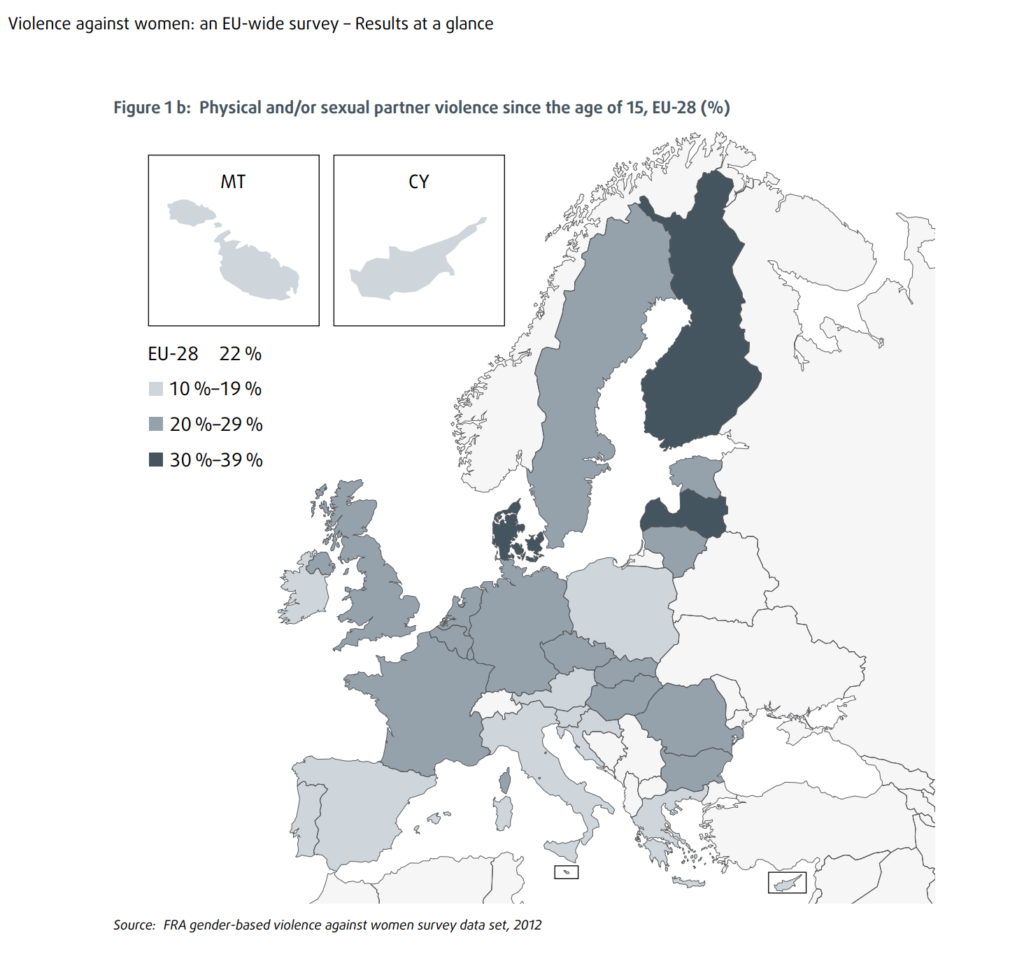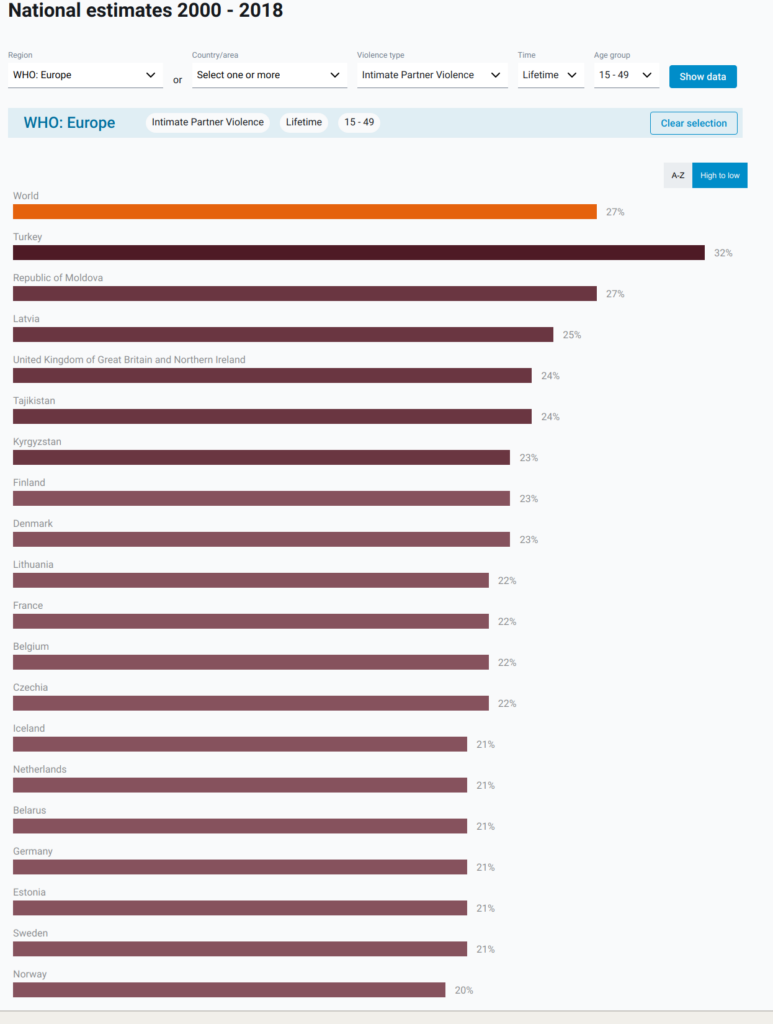Have you heard of the Nordic Paradox?
I quote a paper on the subject:
Intimate partner violence against women (IPVAW) is a global public health issue often assumed to be associated with gender inequality. The so-called Nordic Paradox, the apparently contradictory co-existence of high levels of IPVAW and of gender equality in Nordic countries, has not been adequately explained.
Let me tell you, all this is new-speak in my ears, starting with ” IPVAW”, which is international jargon for what we normally refer to as “domestic violence”.,
The reason I found the said paper was that I was confronted a few weeks ago by friends in Spain who resented my – ehem – “insinuation” that Spaniards go around battering and killing women. Yes it is true that a year or two or three ago, 55 women were killed in Spain. But, my friends continued, how many people live in Spain? So how many femicide victims are there per 100k in Spain?
I was put to shame.
My friends sent me figures and charts and goodness-knows-what, to demonstrate the opposite of what I had posited. Below, you will find a map of the EU countries. Source: Violence against women: an EU-wide summary. The 2012 findings were apparently more or less corroborated in a rather more wide-ranging March 2021 report. You will recognise the “FRA” logo of both reports.
What the map tells us is that the countries with least domestic violence are, interestingly, countries we generally consider Catholic. Countries with the highest reported levels of domestic violence are Denmark, Finland and Latvia. I repeat: these figures are from 2012.
So, are Protestants more violent than Catholics?
Are Catholics more reluctant to report domestic violence than Protestants? What about Muslims?
This line of enquiry is not politically correct, so I will leave it for now.
Norway and Iceland are not on the map as they are only EEA countries.
Statistics Norway provides very little information about domestic violence in Norway. All I found were three terse sentences:
Lifetime Physical and/or Sexual Intimate Partner Violence: 27 %
Physical and/or Sexual Intimate Partner Violence in the last 12 moths: 6 %
Litime Non-Partner Sexual Violence: Official National Statistics Not Available.
As for Iceland you will see that Denmark, Finland and Iceland are high up on a WHO shame list (notice Turkey!!!):
To summarise: In the European Nordic countries, not least in Iceland, there is greater gender parity than practically anywhere else in Europe. Forget the details for now, but let’s just say that women in these countries enjoy as much liberty, pay and prestige as men. E.g.: The Danish, Finnish and Icelandic prime ministers are all women. However, there is more domestic violence in these same countries (and in the UK) than almost anywhere else in Europe.
Again I direct your attention to the interesting paper about a Swedish study that I mentioned by way of introduction. It refers to various suggested explanations for the paradox, such as male backlash at female success, and high alcohol consumption. It discusses whether women in Sweden are more prone to report maltreatment than women elsewhere. It points out that there are reasons to argue that the opposite may be the case. The paper also dismisses the theory that immigrants are at the heart of Sweden’s poor showing, as “othering.
Enter Iceland. Again, Iceland is not on the EU map and is more interesting than Norway in this context, as I hope to demonstrate. Iceland is a particularly interesting country for researchers of — not least — medical, social and natural sciences as it is an island. (Hardly any Moslem immigrants have even considered taking refuge on that cold Atlantic rock. ) Due to its tiny population of about 360 thousand, Island is also frequently a statistical aberration.
So, no, Muslims do not explain IPV in Iceland.
To be continued.


